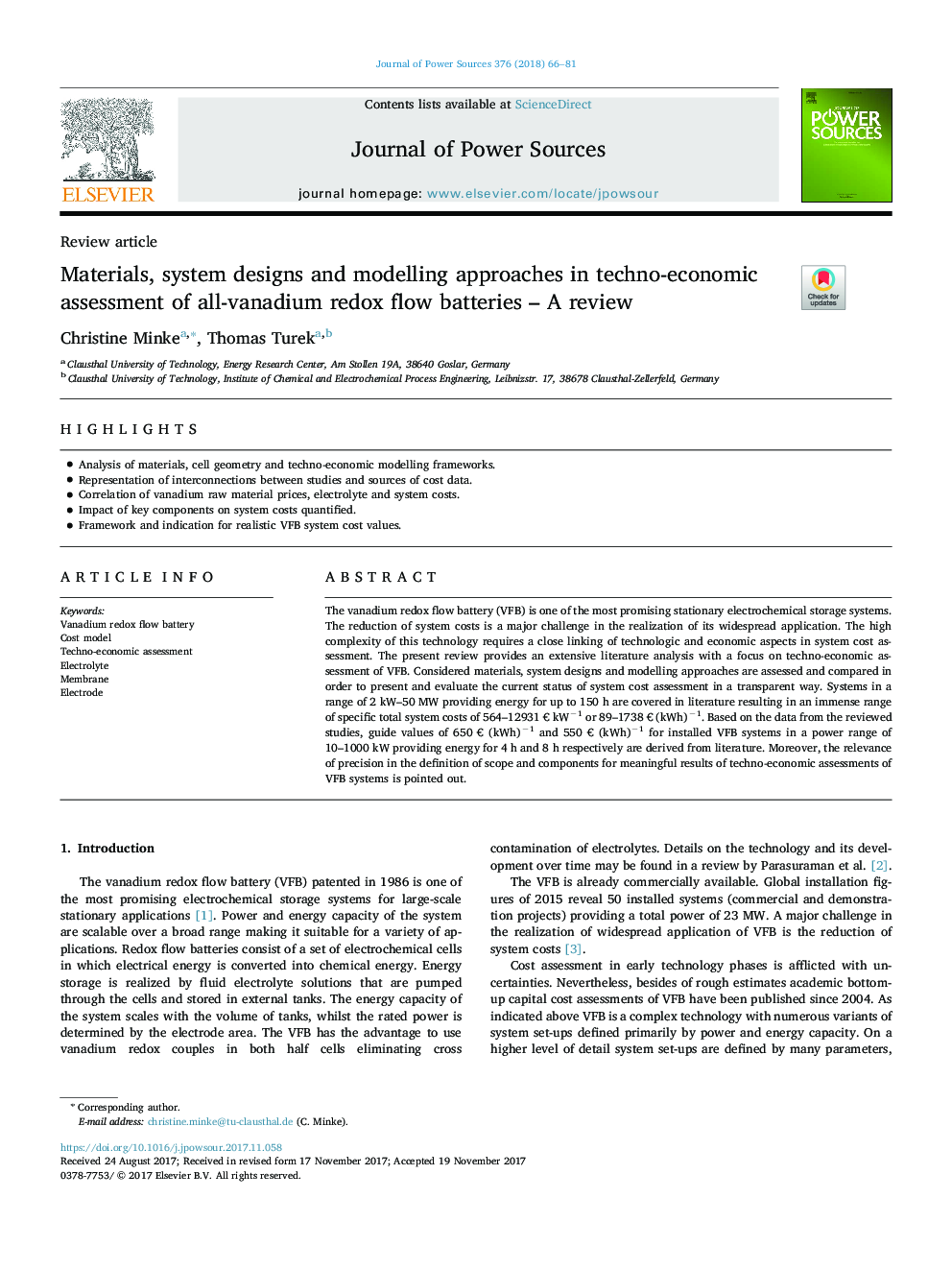| Article ID | Journal | Published Year | Pages | File Type |
|---|---|---|---|---|
| 7725953 | Journal of Power Sources | 2018 | 16 Pages |
Abstract
The vanadium redox flow battery (VFB) is one of the most promising stationary electrochemical storage systems. The reduction of system costs is a major challenge in the realization of its widespread application. The high complexity of this technology requires a close linking of technologic and economic aspects in system cost assessment. The present review provides an extensive literature analysis with a focus on techno-economic assessment of VFB. Considered materials, system designs and modelling approaches are assessed and compared in order to present and evaluate the current status of system cost assessment in a transparent way. Systems in a range of 2 kW-50 MW providing energy for up to 150 h are covered in literature resulting in an immense range of specific total system costs of 564-12931 ⬠kWâ1 or 89-1738 ⬠(kWh)â1. Based on the data from the reviewed studies, guide values of 650 ⬠(kWh)â1 and 550 ⬠(kWh)â1 for installed VFB systems in a power range of 10-1000 kW providing energy for 4 h and 8 h respectively are derived from literature. Moreover, the relevance of precision in the definition of scope and components for meaningful results of techno-economic assessments of VFB systems is pointed out.
Keywords
Related Topics
Physical Sciences and Engineering
Chemistry
Electrochemistry
Authors
Christine Minke, Thomas Turek,
